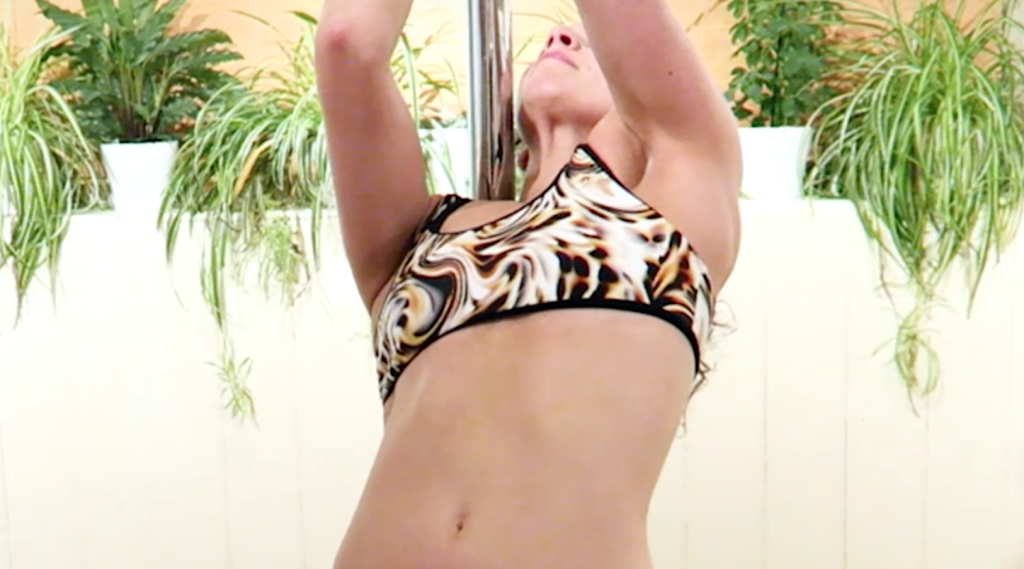Pole Dance at Home – Things You Should Know
So many of us nowadays have poles at home, which is great. I know that I wouldn’t be as good as I am now if I didn’t have a pole at home. I love being able to try out moves from class or workshops and see what new moves I can learn.
It can be difficult watching moves online and figuring out how hard they are. There are so many moves I try that I think will be ‘easy enough’ and I don’t come anywhere close. While it’s great to try new things, it’s also super important to look after yourself.
So here are some guidelines that I try to follow when I train at home.
Safety First
Of course, this needs to happen before you get on the pole. Make sure your pole is up safely and securely. Have a mat and a spotter. Make sure you warm up and cool down and drink plenty of water. Make sure you have plenty of room to do the moves that you are trying to do!

Schedules
It can be hard to figure out how much to train. Always make sure that you give yourself at least one rest day per week.
If I am working on moves that I can do, but want to make stronger, I usually train them about 5 times on each side. Sometimes more if I’m close to nailing it. If it’s a new and painful move, I aim for 3.
For example, when I first started working on Shoulder Mounts, there was so much pain that I could only manage three. There’s no point in putting yourself through unnecessary pain. Your brain and body need time to recover and figure out what they are trying to do.
I’m forever going on about how important training on both sides is. I know that if there’s no one there forcing you to do it, you might not. Just think of all the cool tricks and transitions that require you to go from one side to the other side – there’s so many more than you think, and it will give you inspiration to train as well.
You don’t have to work on the same moves – if you’re training your Extended Butterfly on one side but haven’t got your Butterfly on the other, you can work on that. It’ll be much safer and less frustrating!
Difficulty of Moves
It’s really nice going to class and then coming home to work on those moves. It can be a little more tricky finding other moves online for example and working out how hard they are.
If you are not going to class, it is really beneficial to subscribe to an online site which will help you figure out an order for the moves.
There’s not point rushing onto harder moves that you aren’t ready for – you could injure yourself and then not be able to pole for a while. There are so many beautiful moves across all levels. My very general advice is to work on two handed spins, then climbs, then seats. Of course, there are plenty of exceptions, but that’s a good place to start.
I would avoid inverting until at least 3 months of training. Everyone is different, but you all need to master the basics before inverting. Some will be a little less and some would be more, but that’s what I aim for.
When inverting, the more skin on the pole, usually the easier it is. For example, a Butterfly has 3 points of contact and an Ayesha has only two – Butterfly is easier. Yes, there are plenty of examples the other way, but use your common sense  The less movement to get into a move, the easier. The more time upside
The less movement to get into a move, the easier. The more time upside
Yes, there are plenty of examples the other way, but use your common sense  The less movement to get into a move, the easier. The more time upside down, is harder. Dynamic moves are difficult.
The less movement to get into a move, the easier. The more time upside down, is harder. Dynamic moves are difficult.
Try to think of the order of moves. For example to do a Flatline Scorpio, you will need a strong Crucifix first. If you don’t, work on the Crucifix first, your body will thank you for it.
Rates of Progression
As in class, there will be moves that you nail relatively easily, and there will be moves that you think will never come. Everyone feels this. Try to make sure that you remember that pole is hard.
Don’t get frustrated if you can’t do a move.
Try your move on both sides and move on. It will get better with practice. If you’re struggling, work on variations of moves that you can do. It’s likely that you will be able to get it easier and will feel better about training.
Training at home can be difficult, but it can also be very rewarding. I love to train with other people and then work on those moves I’ve tried in workshops and privates at home. I push myself more and am more confident.
There are plenty of times when I rely on a spot, as I would do in class. I love going back to old moves and trying to add on or figuring out how to get from one move to another.
Poling at home is brilliant, so stay safe and keep up the good learning 😀












